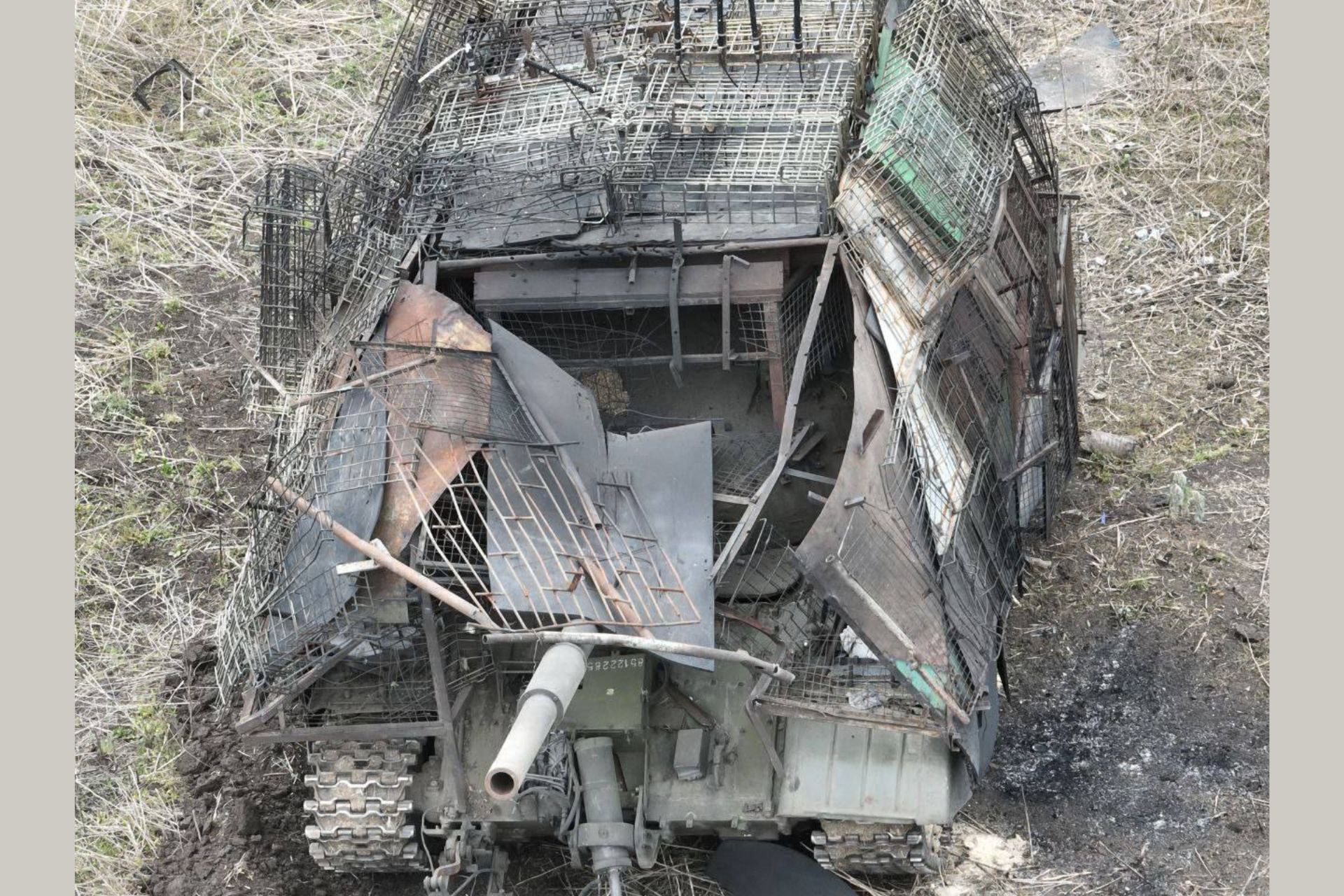Breaking news
Ukraine strikes Russian Turtle Tank thanks 155mm artillery Shell.
In early April, a new type of Russian armored vehicle crawled onto the battlefields of the Russian war against Ukraine — the "turtle tank" — a T-62, T-72, or T-80 tank with additional metal hulls. This turtle tank is made of roofing materials, grilles, and lattices, considered as invincible agaist FPV drones, we are able to see that's not so true anymore.
Follow Army Recognition on Google News at this link

Destroyed Turtle tank based on T-72 with KMT-7 mine clearing device near Krasnohorivka (Picture source: social network )
As odd as they may seem, the turtle tanks actually work, but in wartime, no innovation lasts very long. The Ukrainians managed to destroy a specimen of it.
American armament historian Matthew Moss had announced that we will likely witness a new proliferation of 'turtle tanks' in the coming weeks, but over time, the Ukrainians will probably find more effective ways to engage these protected tanks.
The problem for the Russians is that the turtle tanks were a technological solution to a specific technological problem: it is estimated that 100,000 FPV explosive drones that Ukrainian troops launch each month at Russian troops and vehicles are having major success.
The welded hulls of the turtle tank block the FPVs in most directions, while the radio jammers that some crews add to the hulls can interfere with the drone control signals.
Protected from what was, at the time, Ukraine's most important ammunition, the turtle tanks could roll towards Ukrainian positions with relative impunity, demining with mounted rollers (T-72 with KMT-7 model) at the front so that other vehicles could get close enough to drop off infantry.
But the $500 FPVs, produced in small workshops spread throughout Ukraine, have always been a stopgap: a way for Ukrainian forces to compensate for a shortage of artillery and missiles mainly resulting from a several-month blockade of US aid to Ukraine by a small group.
When this blockade was finally lifted at the end of last month, the Pentagon quickly sent $1.4 billion of new ammunition to Ukraine. These shells and missiles, combined with a significant batch of ammunition from the Czech Republic, are changing the dynamics along the 600-mile front line of the war in a broader sense.
When Russian regiments attack, Ukrainian brigades can now fire, in greater numbers, 155mm shells and missiles in addition to launching a few kilos of drones.
A thin metal roof might deflect a fragile drone carrying 500g of explosives. But it offers no protection against artillery shells.
The addition of this metal hull imposes a very limited field of vision on the crew and greatly reduces the vehicle's evacuation capabilities. Previously, this was not a real problem, as the likelihood of the additional protection being destroyed was very low. Now that they are bombarded by heavier munitions, the crews of the turtle tanks can no longer afford to be blind and trapped.
As the Ukrainians rearm in the coming weeks and months, it may become increasingly easier for them to destroy the attacking turtle tanks. And this could force the Russians to abandon the rudimentary design of the vehicle or at least modify it. But reducing the metal hull to allow greater mobility and visibility could let more FPVs through.
In wartime, innovation affects both means of attack and protection. Therefore, we can expect new innovations that are more or less effective in the face of these new constraints imposed by the terrain.


























